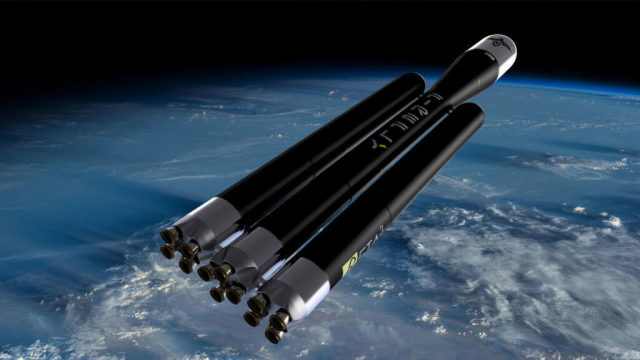The American company Aerojet Rocketdyne assembled the first liquid rocket engine AR1. Perhaps it will be used on the American-Ukrainian carrier from the company Firefly Aerospace.
Aerojet Rocketdyne has completed the assembly of the first AR1-a new rocket engine, the project of which is funded by the US Air Force. The company plans to supply such engines for medium-class launch vehicles.
AR1 was assembled at the John Stennis Space Center, Mississippi. "The next step is to test it," said Jim Mazer, senior vice president of Aerojet.
The company developed the engine as a possible replacement for the Russian RD-180, which is used on the first stage of the Atlas 5 rocket. Earlier, Congress instructed the Air Force to stop relying on Russian engines, so the service signed a contract with Aerojet worth more than $ 800 million for the development, testing and certification of the AR1. After the rocket company United Launch Alliance (ULA) decided to use a different engine for its new Vulcan rocket — the BE-4 Blue Origin — the contract was reduced to 350 million.

BE-4
Image source: wikipedia
After losing the deal with ULA Aerojet, Rocketdyne continued to develop the AR1 and hopes to receive contracts in the future. Earlier, the company signed an agreement with the American-Ukrainian startup Firefly Aerospace on the possible use of the AR1 engine for a promising launch vehicle.
Firefly, we recall, is currently working on several missile projects. The company is developing an oxygen-kerosene Firefly Alpha and a more powerful Firefly Beta, which can get AR1.

Firefly Beta
Image source: spacenews
It is assumed that the key driver of the market will be the US Space Force. Last year, they began researching the next-generation launch vehicle market and may consider investing in new mid-range carriers. According to analysts, this may attract private investors.
Importantly, Aerojet Rocketdyne is in the process of being acquired by Lockheed Martin. Neither company has commented on exactly how the deal will affect the future of the promising engine.
Recall that not so long ago, Russia conducted the first fire tests of the RD-171MV liquid-propellant engine designed for the Soyuz-5 launch vehicle. According to previously submitted data, the development time of this carrier has been shifted again : the delivery of the draft project is scheduled for 2021.

